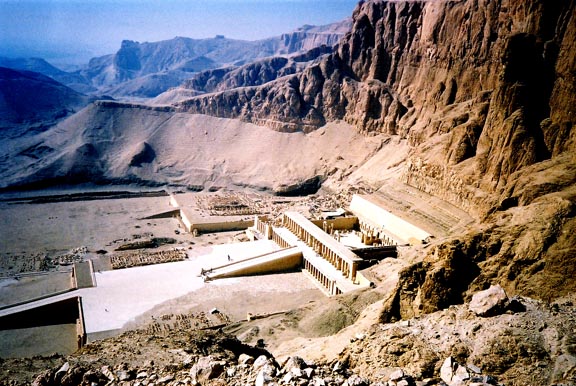The Temple of Deir El-Bahri is one of the more amazing temples in the whole of Egypt, due to its design and decorations. It was built of limestone, not sandstone like most of the other funerary temples of the New Kingdom period.
It is thought that Senimut, the genius architect who built this Temple, was inspired in his design by the plan of the neighboring mortuary Temple of the 12th Dynasty King, Neb-Hept-Re. The Temple was built for the great Queen Hatshepsut (18th Dynasty), to commemorate her achievements and to serve as a funerary Temple for her, as well as a sanctuary of the God, Amon Ra.
The Temple was seriously damaged and defaced, after Queen Hatshepsut's mysterious death, by the followers of Thutmoses III, her successor. Reconstruction work by 20th / 21st century archeology teams continues.


